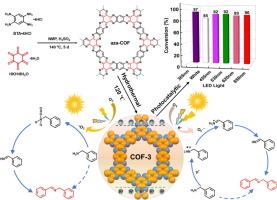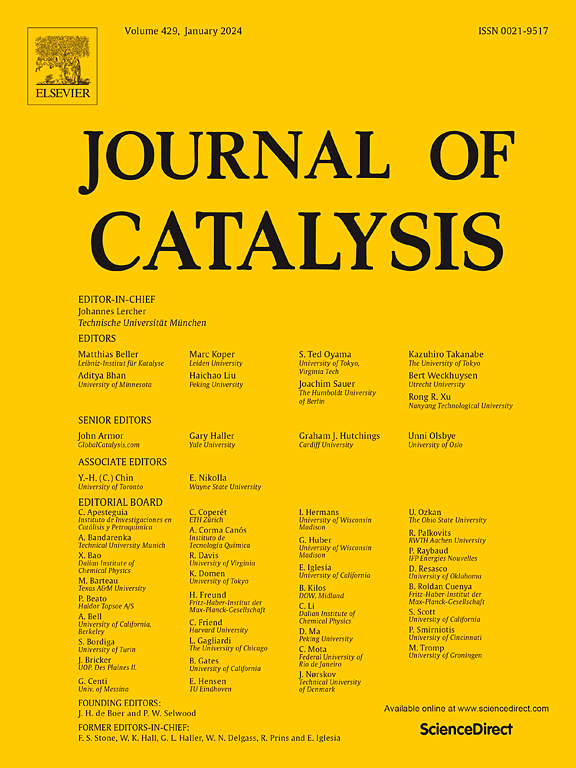Hydrothermal assisted enhancing crystallinity of COF towards effective photocatalytic oxidation of benzylamines
IF 6.5
1区 化学
Q2 CHEMISTRY, PHYSICAL
引用次数: 0
Abstract
Photocatalysis is an environmentally friendly strategy for synthesis of high-value chemicals. However, covalent organic frameworks (COFs), as organic semiconductors, typically exhibit limited electrical conductivity, which significantly affects the photocatalytic efficiency of COF. In this work, a simple hydrothermal treatment method was presented to enhance the conductivity of aza-COF prepared by acid-catalyzed imine condensation of BTA⋅4HCl and HKH⋅8H2O. The crystallinity and carbonization degree of the aza-COF were explored by adjusting the hydrothermal temperatures from 80 to 160 °C. Remarkably, the COF-3 prepared by 120 °C hydrothermal temperature displays the highest photocatalytic conversion rate of benzylamine of 97 % with the high selectivity of 99 % in 4 h, outperforming the pristine aza-COF by 40 %. From various test results analysis, COF-3 exhibits the strongest transient photocurrent response, smallest electrochemical impedance, narrowest bandgap energy, attributed to its enhanced crystallinity, which improves conductivity. Furthermore, the photocatalysis mechanism was elucidated through quenching experiments, which determined the reactive oxygen species.


求助全文
约1分钟内获得全文
求助全文
来源期刊

Journal of Catalysis
工程技术-工程:化工
CiteScore
12.30
自引率
5.50%
发文量
447
审稿时长
31 days
期刊介绍:
The Journal of Catalysis publishes scholarly articles on both heterogeneous and homogeneous catalysis, covering a wide range of chemical transformations. These include various types of catalysis, such as those mediated by photons, plasmons, and electrons. The focus of the studies is to understand the relationship between catalytic function and the underlying chemical properties of surfaces and metal complexes.
The articles in the journal offer innovative concepts and explore the synthesis and kinetics of inorganic solids and homogeneous complexes. Furthermore, they discuss spectroscopic techniques for characterizing catalysts, investigate the interaction of probes and reacting species with catalysts, and employ theoretical methods.
The research presented in the journal should have direct relevance to the field of catalytic processes, addressing either fundamental aspects or applications of catalysis.
 求助内容:
求助内容: 应助结果提醒方式:
应助结果提醒方式:


